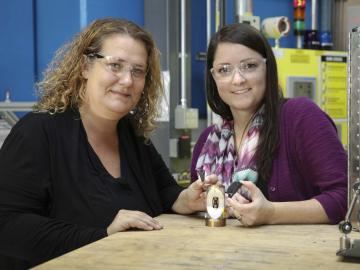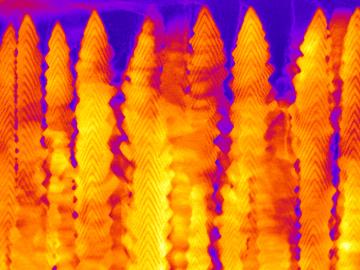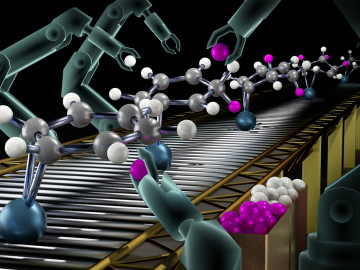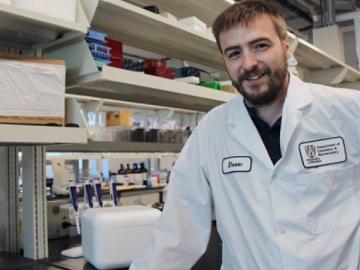
Filter News
Area of Research
- (-) National Security (34)
- (-) Neutron Science (126)
- Advanced Manufacturing (22)
- Biology and Environment (35)
- Building Technologies (1)
- Computational Biology (1)
- Computational Engineering (1)
- Computer Science (9)
- Electricity and Smart Grid (3)
- Energy Science (183)
- Functional Materials for Energy (1)
- Fusion and Fission (13)
- Fusion Energy (7)
- Isotopes (1)
- Materials (98)
- Materials for Computing (14)
- Nuclear Science and Technology (18)
- Nuclear Systems Modeling, Simulation and Validation (1)
- Quantum information Science (1)
- Sensors and Controls (2)
- Supercomputing (84)
- Transportation Systems (2)
News Topics
- (-) 3-D Printing/Advanced Manufacturing (8)
- (-) Advanced Reactors (2)
- (-) Artificial Intelligence (18)
- (-) Big Data (8)
- (-) Grid (6)
- (-) Neutron Science (120)
- (-) Physics (10)
- (-) Security (12)
- (-) Transportation (7)
- Bioenergy (10)
- Biology (11)
- Biomedical (16)
- Biotechnology (2)
- Buildings (1)
- Chemical Sciences (5)
- Clean Water (2)
- Composites (1)
- Computer Science (31)
- Coronavirus (12)
- Cybersecurity (19)
- Energy Storage (8)
- Environment (13)
- Exascale Computing (1)
- Fossil Energy (1)
- Frontier (2)
- Fusion (2)
- High-Performance Computing (6)
- Hydropower (1)
- Machine Learning (15)
- Materials (16)
- Materials Science (24)
- Mathematics (1)
- Microscopy (3)
- Nanotechnology (11)
- National Security (35)
- Nuclear Energy (7)
- Partnerships (5)
- Polymers (1)
- Quantum Computing (1)
- Quantum Science (8)
- Simulation (1)
- Space Exploration (3)
- Summit (7)
Media Contacts

Oak Ridge National Laboratory has licensed a novel method to 3D print components used in neutron instruments for scientific research to the ExOne Company, a leading maker of binder jet 3D printing technology.

A team led by the Department of Energy’s Oak Ridge National Laboratory synthesized a tiny structure with high surface area and discovered how its unique architecture drives ions across interfaces to transport energy or information.

Matthew R. Ryder, a researcher at the Department of Energy’s Oak Ridge National Laboratory, has been named the 2020 Foresight Fellow in Molecular-Scale Engineering.

Scientists have found a new method to strategically add deuterium to benzene, an aromatic compound commonly found in crude oil. When applied to the active ingredient of drugs to incorporate deuterium, it could dramatically improve the drugs’ efficacy and safety and even introduce new medicines.

Does vaping and smoking e-cigarettes put you at higher risk of COVID-19 complications? UWindsor’s Drew Marquardt is trying to answer that question with research into how the toxicants in the oils of vapes and e-cigarettes affect lung function.

Research by an international team led by Duke University and the Department of Energy’s Oak Ridge National Laboratory scientists could speed the way to safer rechargeable batteries for consumer electronics such as laptops and cellphones.

In the race to identify solutions to the COVID-19 pandemic, researchers at the Department of Energy’s Oak Ridge National Laboratory are joining the fight by applying expertise in computational science, advanced manufacturing, data science and neutron science.

Oak Ridge National Laboratory researchers working on neutron imaging capabilities for nuclear materials have developed a process for seeing the inside of uranium particles – without cutting them open.

A versatile class of flexible, protein-like polymers could significantly advance future drug delivery methods. But first, scientists have to develop a reliable process for tailoring these polymers into shapes that can effectively transport medicines throughout the human body.



